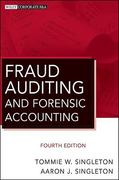Question NO ; 1 3. FILL-IN-THE-BLANK 1. Inventory cost is the variable cost of keeping items on hand, including interest, storage and handling, taxes, insurance, and shrinkage. 2. A(n) is the situation that occurs when an item that is typically stocked is not available to satisfy a demand the moment it occurs. is the cost of preparing a purchase order for a supplier or a production order for the shop. 4. is the cost involved in changing over a machine to produce a different component or item. inventory is the portion of total inventory that varies directly with lot size. The determines the frequency and quantity to order. 7 inventory is the surplus inventory that a company holds to protect against uncertainties in demand, lead tme, and supply inventory is inventory used to absorb uneven rates of demand or supply. 9. inventory is the inventory moving from point to point in the materials flow system. 10. A(n) is an item made to order or, if purchased, is bought to 5. 6. 8. order. 11. Ain) is an item that is made to stock and normally is available when needed. 12 analysis is the process of dividing items into three classes according to their dollar usage so that managers can focus on items that have the higher dollar value. 13 is the lot size that minimizes total annual inventory holding and ordering costs. 14. The is the average elapsed time between receiving replenishment orders of Qunits for a particular lot size 15. demand items are items for which demand is influenced by market conditions and is not related to the inventory decisions for any other item held in stock. FILL-IN-THE-BLANK 17 18. 16. The is the measurement of an item's ability to satisfy future demand are orders that have been placed, but not yet received is the predetermined minimum level that an inventory position must reach before a fixed quantity (Q) is ordered. 19. is the desired probability of not running out of stock in any one order cycle. 20. A(n) is a system that allows employees to place orders when inventory visibly reaches a certain marker. 21. A(n) system is a visual system in which an item's inventory is stored at two different locations. systems are systems in which an item's inventory position is reviewed periodically rather than continuously. 23. A(n) system is a system of inventory control in which a maximum level is marked on the storage shelf or on a measuring rod, and the inventory is brought up to the mark periodically. . is an inventory control method whereby storeroom personnel physically count a small percentage of the total number of items each day, correcting errors that they find 22. Question No; 2 Answer the question 1- An assistant manager is reviewing the costs associated with one of the store's better-selling products. The data available follows: Demand = 4000 units/year Order cost = $50/order Holding cost = $2/unit/year a. The current order quantity is 400 units per order. What is the total annual ordering cost and holding cost for this order size? b. What would be the EOQ and its associated ordering and holding cost








